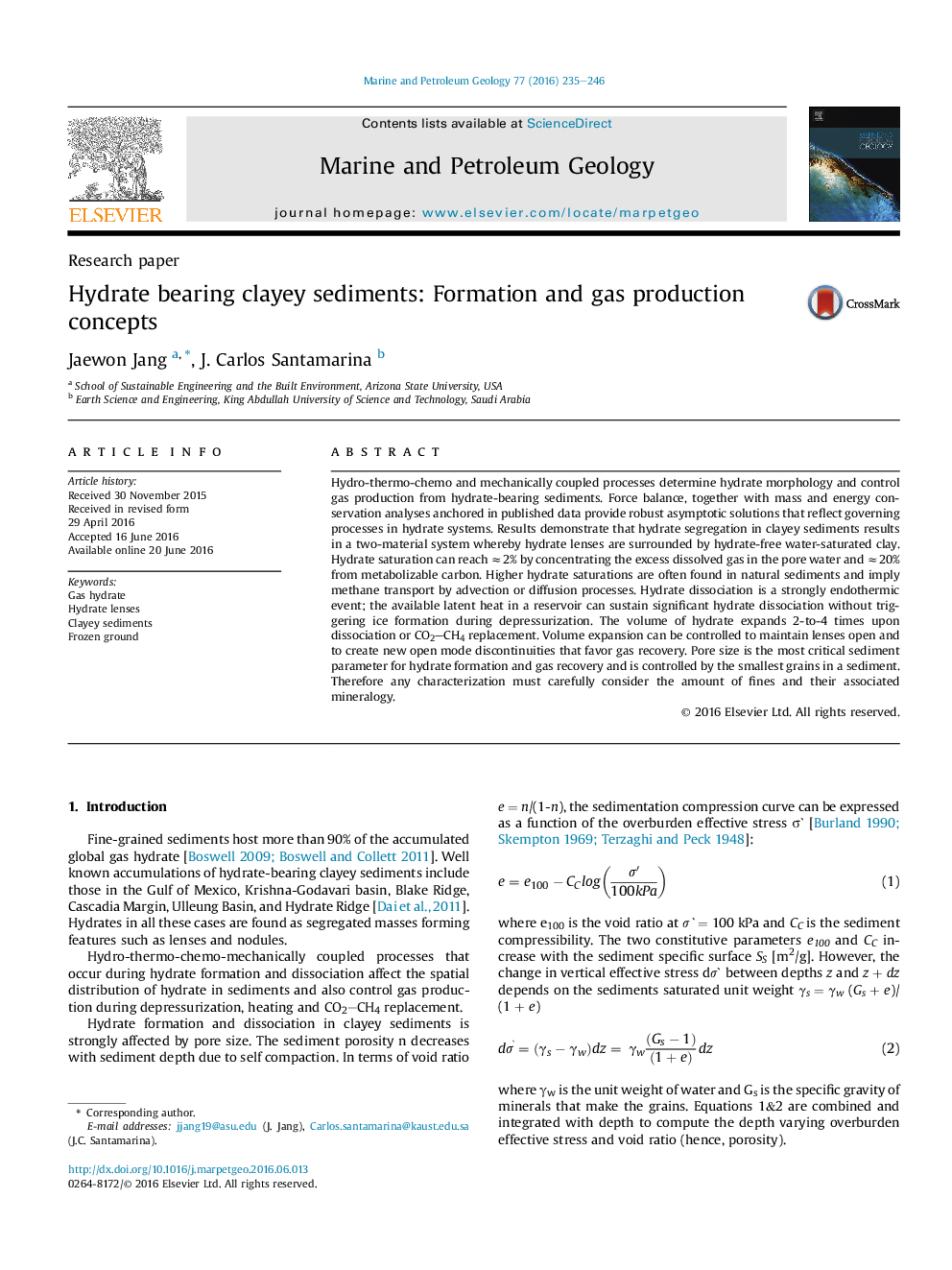| کد مقاله | کد نشریه | سال انتشار | مقاله انگلیسی | نسخه تمام متن |
|---|---|---|---|---|
| 6434544 | 1637150 | 2016 | 12 صفحه PDF | دانلود رایگان |
- The characterization of sandy deposit must consider the amount/mineralogy of fines.
- Particle size, effective stress and capillarity affect the segregation of hydrates.
- In-situ hydrate saturation larger than 20% implies methane transport.
- Hydrate volume expands 2-to-4 times upon dissociation for interested PT condition.
- Latent heat in a reservoir contributes to hydrate dissociation without forming ice.
Hydro-thermo-chemo and mechanically coupled processes determine hydrate morphology and control gas production from hydrate-bearing sediments. Force balance, together with mass and energy conservation analyses anchored in published data provide robust asymptotic solutions that reflect governing processes in hydrate systems. Results demonstrate that hydrate segregation in clayey sediments results in a two-material system whereby hydrate lenses are surrounded by hydrate-free water-saturated clay. Hydrate saturation can reach â2% by concentrating the excess dissolved gas in the pore water and â20% from metabolizable carbon. Higher hydrate saturations are often found in natural sediments and imply methane transport by advection or diffusion processes. Hydrate dissociation is a strongly endothermic event; the available latent heat in a reservoir can sustain significant hydrate dissociation without triggering ice formation during depressurization. The volume of hydrate expands 2-to-4 times upon dissociation or CO2CH4 replacement. Volume expansion can be controlled to maintain lenses open and to create new open mode discontinuities that favor gas recovery. Pore size is the most critical sediment parameter for hydrate formation and gas recovery and is controlled by the smallest grains in a sediment. Therefore any characterization must carefully consider the amount of fines and their associated mineralogy.
Journal: Marine and Petroleum Geology - Volume 77, November 2016, Pages 235-246
